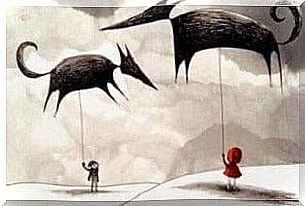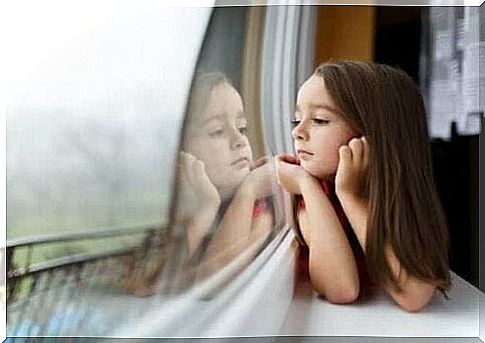Parents: Your Role In Children’s Fears

Parents’ attitudes toward their children’s fears may determine whether or not they hold on to those fears. This means that parents have an important role to play as role models in dealing with emotions.
Lots of studies, like the one conducted by Fredrikson, Annas and Wik (1997), have shown that fear and phobias are more common in some families than in others. But why is this? There are lots of different factors that come into play.
Both genetics and the environment that provide children with specific learning patterns are part of the important role that parents play when it comes to their children’s fears. Let’s take a deeper look at that.
-Gabriela Mistral-

What influence do parents have on their children’s fears?
It seems that the best explanation we have for parents’ influence on their children’s fears has to do with the “conditioning theory of fear acquisition” (Rachmann, 1977). Here are the three ways that the theory suggests:
Spontaneous learning or observation
If children see an expression of fear from their parents or other people who are important to them, they can mimic the basic reaction in similar situations. For example, if a mother always jumps away from dogs in fear, her children are likely to do the same.
There are studies that show that you can capture less fear in this way. For ethical reasons, we have not been able to study more intense fears and phobias, but there is some evidence from animal studies that shows that this is also true to some degree.
Negative information
Learning fear from observation can also end up being amplified by any negative information conveyed about the subject of that fear or phobia.
In the example where mother is afraid of dogs, she can also talk about her fears. It can be anything from why she is afraid of dogs, to what kind she is most afraid of or something like that.
What it does is give a child negative information, whether it is through conversations, stories or play. From there, it may end up determining how the child responds to a similar situation or thing.
Children also learn how to react from other people. This means that a child can learn incorrect confrontation strategies such as avoidance. This can happen, for example, if a child sees that their mother’s fears begin to diminish as she moves further away from the source.

Parental instructions
As we said, in some cases children learn their reactions from their parents. They may end up learning bad confrontation strategies such as avoidance. Parents can also provide advice or instructions that only end up strengthening these confrontation strategies against fear in their children. This is known as the “fear effect”.
Parents can also either respond to their children’s fear of darkness, dogs, separation, school, etc. with love, rage, or calm. Children also play a role. They learn that their parents give them attention when they are scared. This generally leads to them strengthening the behavior and reacting more intensely and more often.
Conclusion
Basically , parents and others who are important to children can reinforce their fears and avoidance tactics because of the connections the children make.
In addition, according to a study by Valiente, Sandín and Chorot (2003), a mother figure plays the biggest role in creating fear. They also play a role in whether the child gets over it or not.
So as a parent, you have an important role to play when it comes to your children’s fears. It is important that you learn to analyze your own fears and respond better to them. This is especially true when you are with your children. In this way, you help them become better adapted adults.









